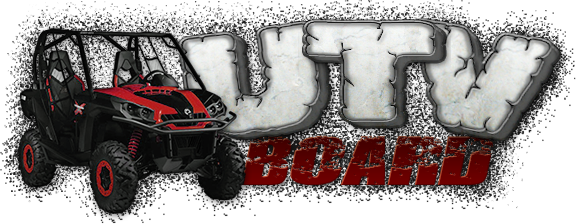Bighorn 400cc jerking acceleration
-
Similar Topics
-
By aefron88
This post will explain how to hook up your PC to the ECU of a Hisun/Coleman/Etc UTV to be able to read error codes & engine parameters for troubleshooting purposes.
This is applicable to all small engines using the Delphi MT-05 ECU. This should cover all fuel injected Hisun models, as well as various other Chinese FI engines, as the Delphi MT-05 ECU seems to be the favored ECU solution.
Even though we get actual engine error codes to display on the dash, sometimes we have “pending codes” (not yet confirmed by the ECU) or other intermittent issues that are hard to diagnose, for example a poorly connected sensor that may give intermittent false readings, or a sensor that’s putting out bad date, but not bad enough for the ECU to realize.
The setup requires 2 cables, which are available for around $25 combined, a PC with a USB port, and some charityware software called “HUD ECU Hacker”. This gives the same functionality as the $300 dealer code scanner for a fraction of the price.
In searching I found info about HUD ECU Hacker, but I have yet to see info anywhere about how to hook it up to a Hisun, so I took the leap and bought some cables, and made it work. I will show a step by step of how to do so in post two.
I will be breaking this down into 2 posts:
Delphi ECU Info & Overview (This post) System setup & use Delphi ECU Info (Skip ahead to the next post if your eyes glaze over technical details)
The Delphi MT-05 ECU was developed to allow small engines to use fuel injection. A fuel injection system requires feedback from various sensors to operate efficiently. This feedback allows the adjustment of ignition timing, fuel injection volume, etc to efficiently and cleanly produce the most power possible from a given engine.
The MT-05 ECU has a number of sensors that are required for proper functioning including; Coolant temp, crankshaft position, intake temp, intake pressure, exhaust O2, throttle position, as well as some other optional sensors that are used on more complex vehicles.
From the sensors the ECU adjusts: Fuel injector timing/pulse, Idle air control valve, and ignition coil
The Delphi MT-05 puts out diagnostic data, however it is not ODB2 like a modern car, where is where it gets tricky reading it. There are three options, there is an old 16 bit piece of software Delphi has that is not able to run on a modern computer, there is the motorscanner tool for dealers ($300), or there is freeware HUD ECU Hacker with the proper cables.
-
By SSgt1994
Hello everyone, second time posted looking for assistance. First time you all were a great help!
I have an 2013 XY Powersports 600GKE UTV, sweet little machine when she was running. My youngest last fall get it covered in mud, and then blew the engine. I mean she doesn't start any more, and we've even tried rebuilding it since he's in a Vocational School for Power Sports and Diesel course, but no luck.
One of the other members (NVM"something") was really knowledgeable about the machine I had and the engine, all I can tell you is its a CFMoto. If I can't find a replacement, does anyone know if there is one that it can be easily swapped out with, or even minor modifications.
Thanks!
Myron
-
By D MAYNARD
I have an Axis 500 4x4 UTV that I was given. It looks like an almost new machine with 39 hrs on it however it was apparently under water from the hurricane . I have no spark at the plug. I have replaced the plug, the plug wire, & the stator so far. Can anyone advise me of what i need to check and or replace to get this thing running? Any advise would be greatly appreciated.
Thank You,
D Maynard
-
-
By Graffy
Im new to the UTV world but not new to the fabrication world. Me and my friend have been focusing on designing and building a rallye-type setup with a custom chassis and a single seater. With suspension design at a good point, we want to start work on the chassis; however, there is one big hiccup in the way, and that is the powertrain. We've been going back and forth on this for quite some time now and realized that we cant find any great options. We want the engine to be behind the driver and mounted between the seat and the rear axle with a transaxle setup. We aren't going to need any power for the front wheels, as this is an RWD application (Toyota MR2 style setup). It also needs quite a small engine; I would love for it to be 100+ hp and possibly be turbocharged down the line, but power isn't a huge deal right now. Right now its a battle between a UTV engine X trans or a bike engine with a diff.
Although crotch rocket engines are super cool, they aren't built for high-torque applications, and a differential setup for one can range up to $6k, which is pretty ridiculous for our initial budget. (We are not going chain-driven as we have bad experience in that area.).
That's what leads us to UTV x Snowmobile drivetrains. I was initially surprised to find out how much power they have and realized it could be a great option with how they are designed for high torque applications. It is a difficult situation to find a good setup.
The transaxle needs to be either a manual or a sequential setup. And although there are some great engine options, with my limited knowledge in the UTV world, I have yet to find a transaxle that fits or works well with those engines.
So my questions are this: Does anyone know of a good combo or might be able to lead me down a direction? Could it be damaging to an AWD transmission if nothing is connected to the front output shaft and only the rear diff?
-






Recommended Posts
Join the conversation
You can post now and register later. If you have an account, sign in now to post with your account.
Note: Your post will require moderator approval before it will be visible.